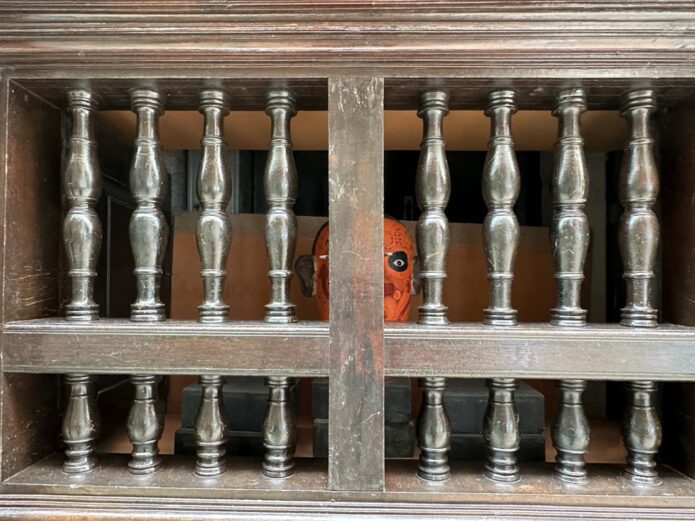In December 2017, Charlene Murphey, a 75-year-old patient, was admitted to Vanderbilt University Medical Center in Tennessee after suffering a brain bleed. Within two days, her condition had improved. Doctors ordered a PET scan before she was discharged, and prescribed Versed, a mild sedative, to help calm her nerves.
Nurse RaDonda Vaught was assigned to administer the medication. She went to the automated medication cabinet, typed in the drug name—but it didn’t show up. This was a familiar glitch. Staff had grown used to bypassing it. So Vaught used the override function, a routine workaround in the hospital.
But something went terribly wrong. Instead of Versed, she pulled out vecuronium—a powerful paralytic. She administered the drug and left. Murphey stopped breathing and never woke up.
The First Story and Its Limits
The hospital fired Vaught. Her license was revoked. She was convicted of criminally negligent homicide.
To many, the case seemed open and shut. A nurse made a fatal error. Justice was served.
But that’s only the surface story—the one that provides a name, a mistake, a punishment. Sidney Dekker, Professor in the School of Humanities, Languages and Social Science at Griffith University in Brisbane invites us to look deeper: Why did this make sense to the nurse at the time?
That’s where the Second Story begins.
A System Set to Fail
Vaught was not careless. She worked in a system that had quietly normalised risk. Medication cabinets were glitchy. Overrides were expected. Nurses weren’t trained on the risks of the override function. No one flagged it, because everyone used it.
This wasn’t just human error. It was a system error.
Organisational thinker Chris Argyris called the surface-level response Single-Loop Learning—fixing the behaviour without questioning the system. The real opportunity lies in Double-Loop Learning: changing the underlying rules and culture that made the behaviour possible.
Culture in Action—And Why It Matters
Every organisation has two cultures: the one printed in posters and handbooks, and the one people actually live.
One says, “We value safety.” The other says, “Don’t slow down.” When those messages clash, people choose the one that protects their job or helps them survive the day. It’s that simple.
Over time, shortcuts become habits. Risks become invisible. And when something breaks, the system often blames the person it failed to support.
But it doesn’t have to be that way. In Japanese train stations—some of the safest and most efficient in the world—staff follow a practice called “pointing and calling.” I saw them point to signals, say them aloud, and actively confirm their actions. It looked dramatic, but I learnt that it significantly reduces errors. There, safety isn’t a statement. It’s a system. It’s culture by design—not by hope.
That’s why the Second Story in organisations matters so much for managers, leaders and of course, consultants. The First Story gives you a neat diagnosis and a fast fix. The Second Story in organisations requires deeper listening and more courage—but it reveals where change is truly needed. It shows the disconnect between values and behaviour. It helps leaders shift from blame to learning and therefore, to change.
Questions To Ask
Crucially, the Second Story isn’t only for understanding failure—it helps explain success too. When an athlete wins gold, it’s not just about training hard. It’s about the coach, the physiotherapist, the diet plan, the mental support, the facilities, DNA—everything behind the scenes that made excellence possible.
In organisations, too, when a team thrives, don’t just clap. Ask: What made this work? What conditions allowed people to do their best work? When we see the system behind the success, we can repeat it. When we ignore it, we leave future outcomes to luck.
Final Thought
The Second Story is always there. It’s not about blame—it’s about learning. It helps us see not just what went wrong or right, but why it made sense, and what needs to change.
Charlene Murphey didn’t just deserve a trial; she deserved a transformation. A system that looked at what failed her—not just who did. And perhaps the Nurse RaDonda Vaught, too, didn’t just need punishment; she needed a system that supported her, trained her, and designed work that made safety easier, not harder.
Because the best way to honour a tragedy is to make sure the system learns from it—and becomes less likely to repeat it.
If you’re willing to look deeper, you’ll see more. And in that, lies the path to better systems, better culture, and better outcomes.



Thanks for discussing an interesting subject and bringing your insights. We look at an ‘occurrence’ from two lenses. The first is ‘who done it?’ It is a punishment purpose. The other is’why did that happen?’ And it usually leads to reformative approach. The corporate world has discarded the latter long ago and done immense damage to the Society!
Thank you for your comments as always sir. The corporate world has changed society in many ways. Perhaps this is one.
Thank you for your comments as always sir. The corporate world has changed society in many ways. Perhaps this is one.
It’s a conscious choice to ask why and how ? A genuinely curious person will look beyond the obvious and find out alternatives to eradicate the issue from the root. A wise person will ensure that it doesn’t repeat. Love your blogs Kavi , keep writing !
Thank you Prerna. Super glad that this resonated with you. Speak soon
Thank you so much for bringing this up. Its so profound and we often miss the Why in Who… Right time we calibrated the right questions to ensure success.
Thanks much Anuradha. The why is indeed the forgotten piece in the maze of the who!